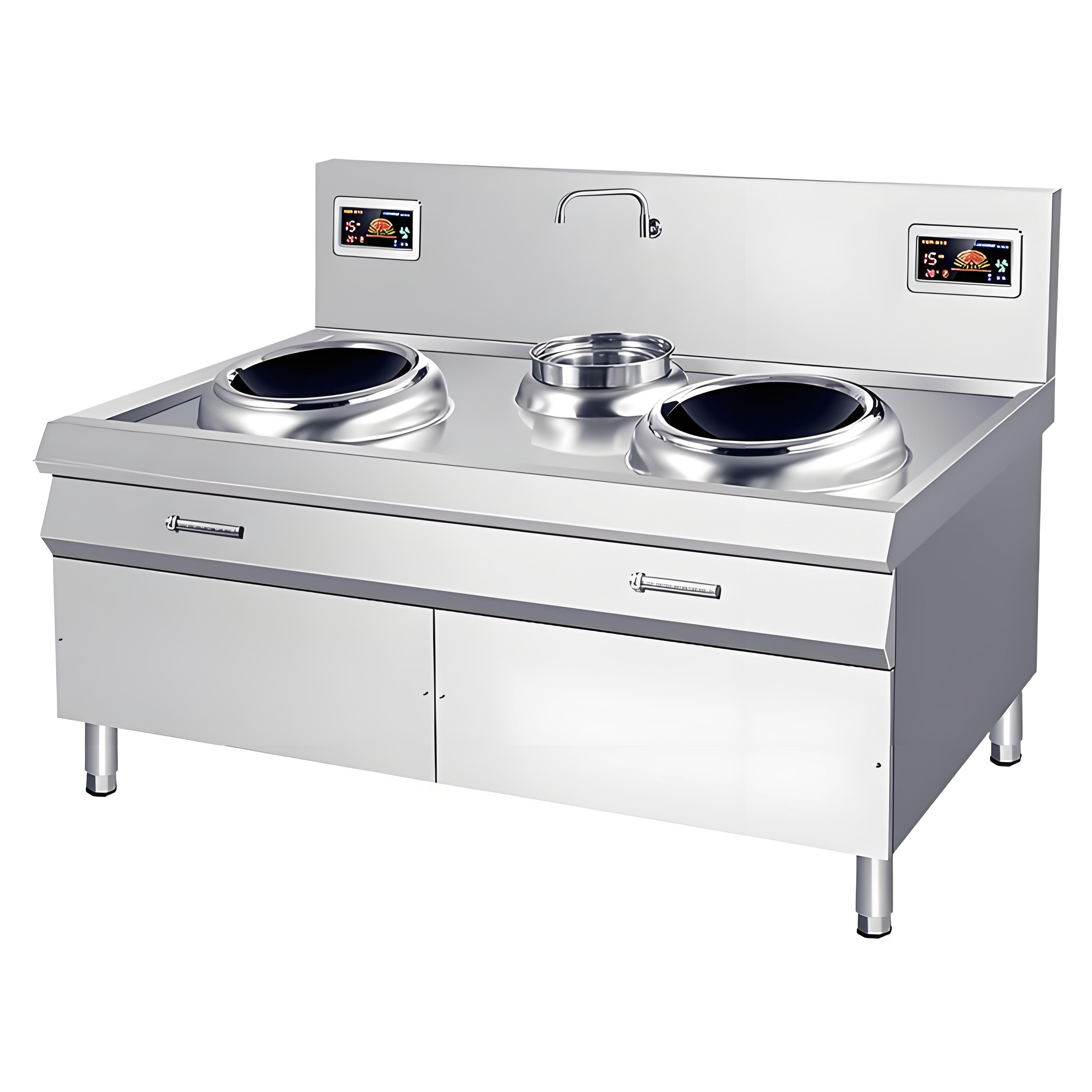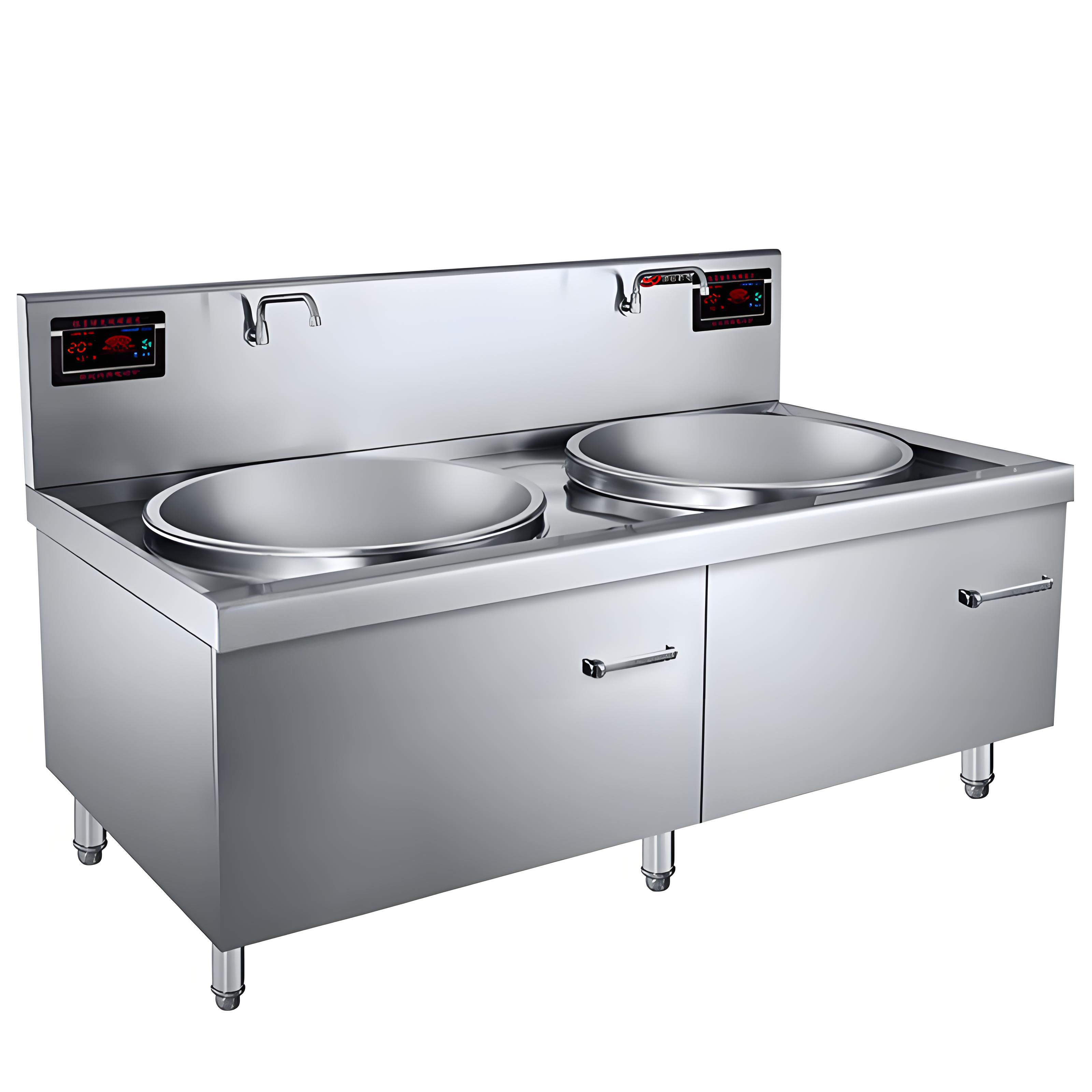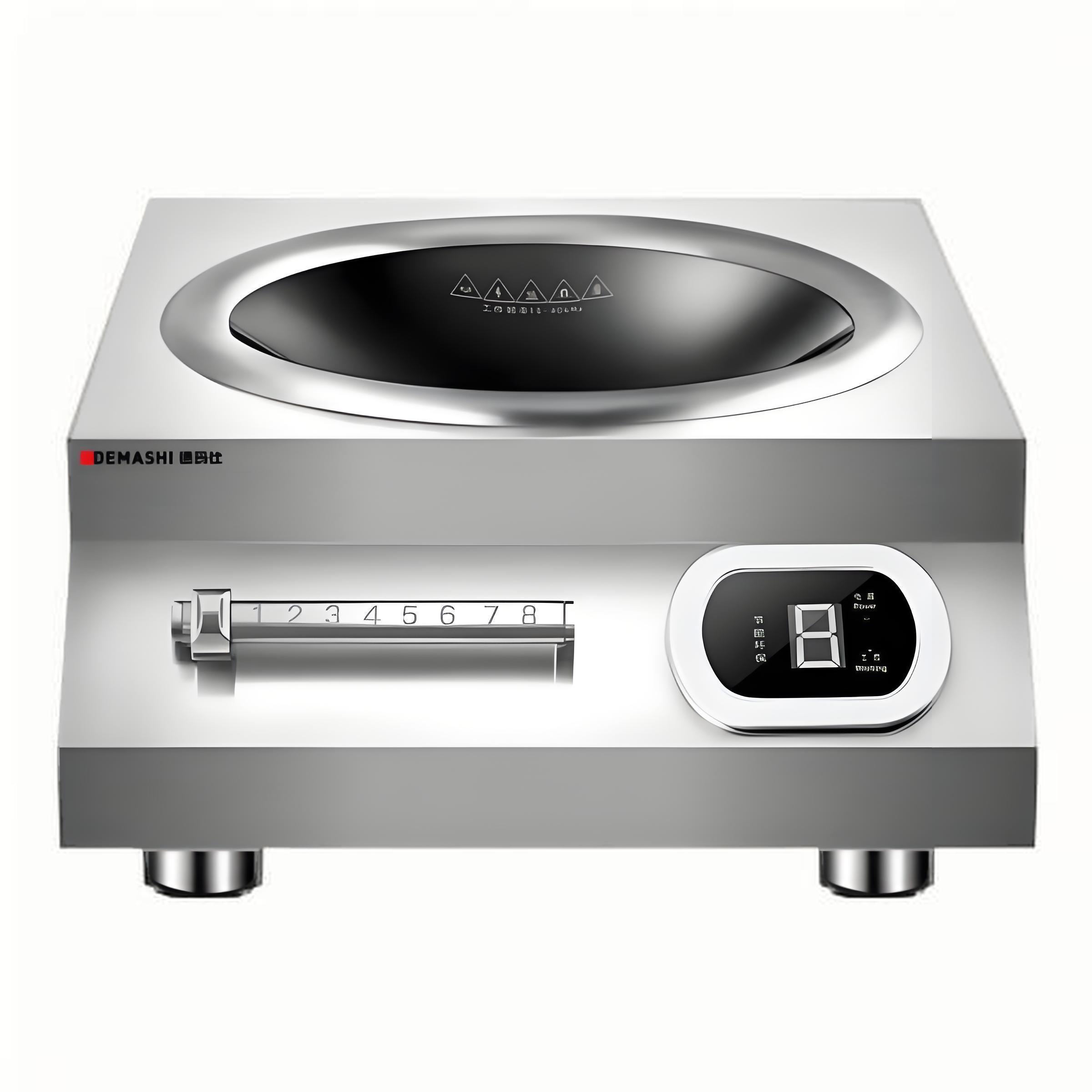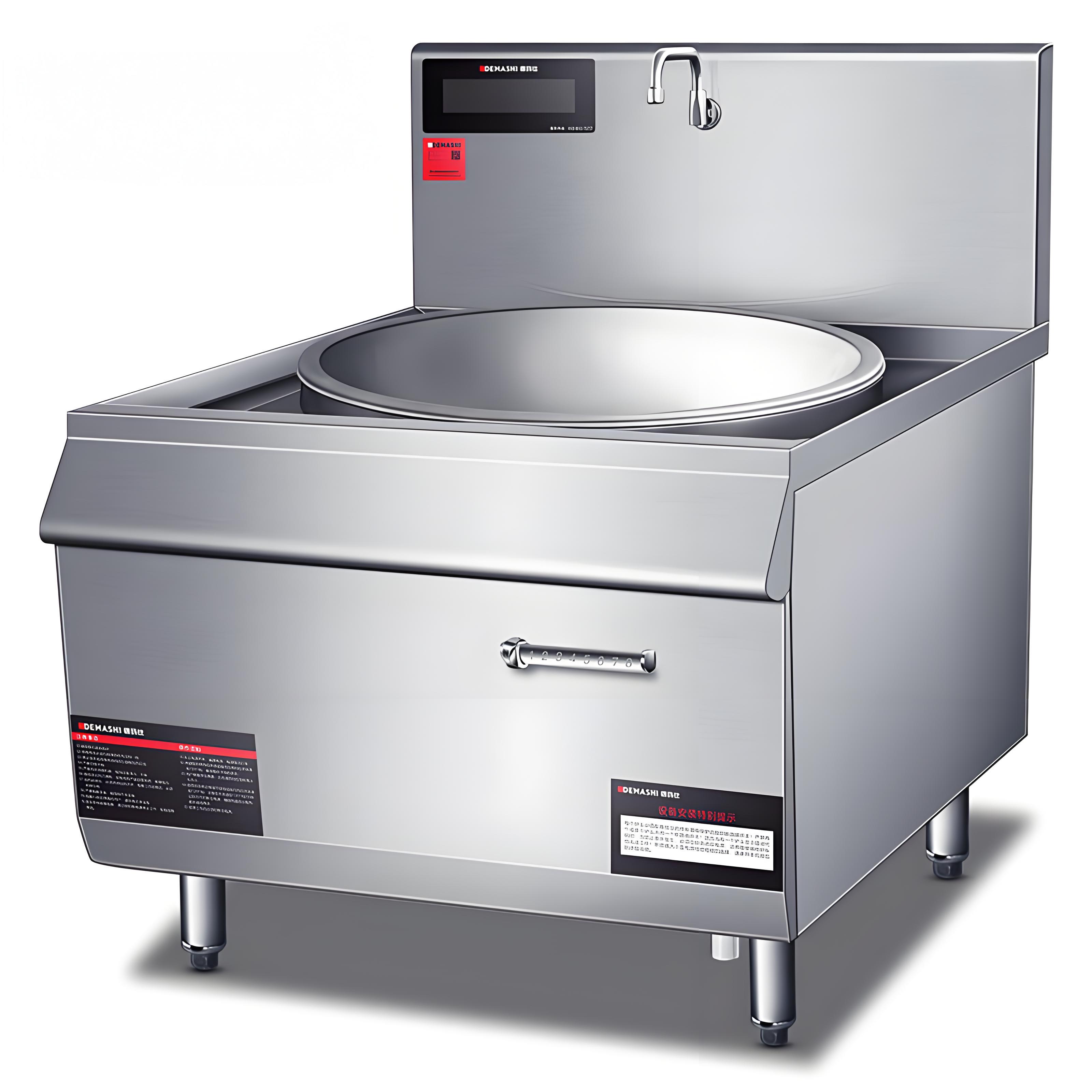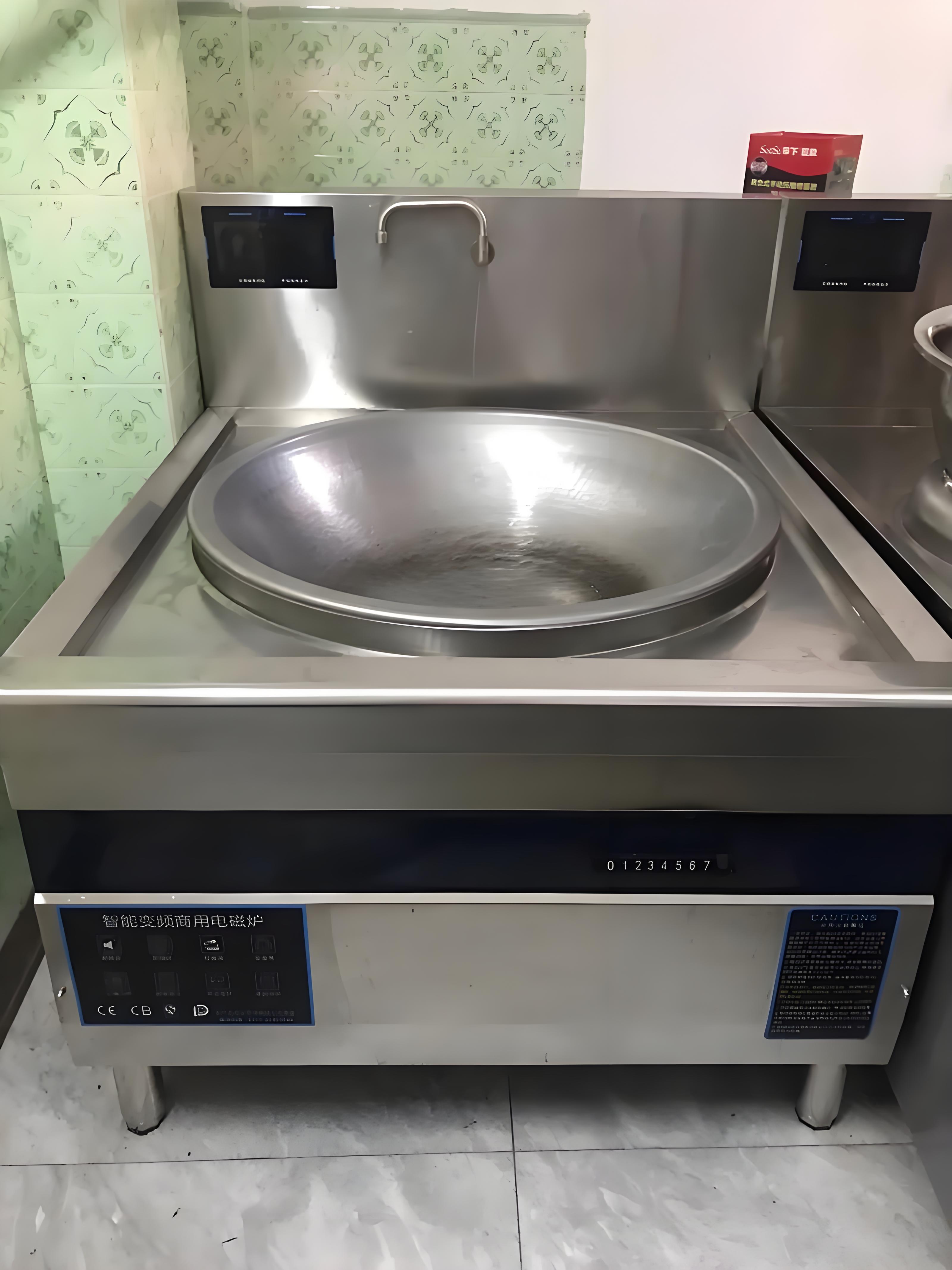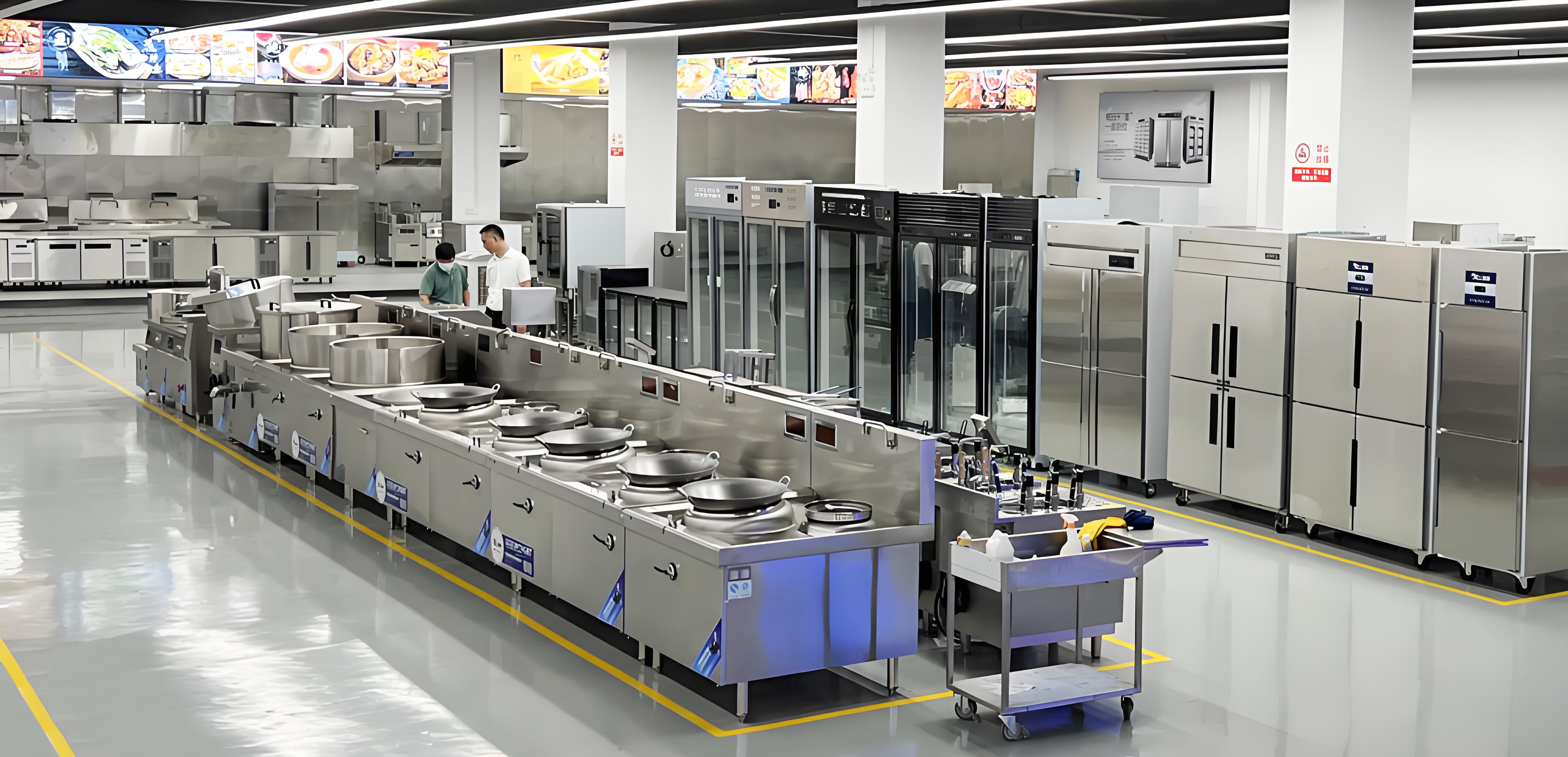It was a rainy Saturday morning when I received a panicked call from a friend who’d just invested in a 5,000W commercial induction cooker for his new food truck. “The thing keeps shutting off!” he said. “I followed the manual, but it’s not heating properly—what did I do wrong?” When I arrived, I saw the problem immediately: he’d placed a thin aluminum pan on the cooktop, set the power to “max,” and left it unattended. The cooker’s safety sensors had tripped, and the pan was scorching unevenly.
That day, I realized: many users treat high-power induction cookers like regular appliances, but their size, power, and precision demand a different approach. Whether you’re a home cook upgrading from a stovetop or a restaurant owner managing a busy kitchen, understanding how to use these devices correctly isn’t just about avoiding breakdowns—it’s about maximizing efficiency, safety, and longevity.
Over the past decade, I’ve helped hundreds of kitchens transition to induction cooking, from small cafes to large catering services. In this article, I’ll break down the most common mistakes I’ve seen and share actionable steps to use your high-power induction cooker like a pro.
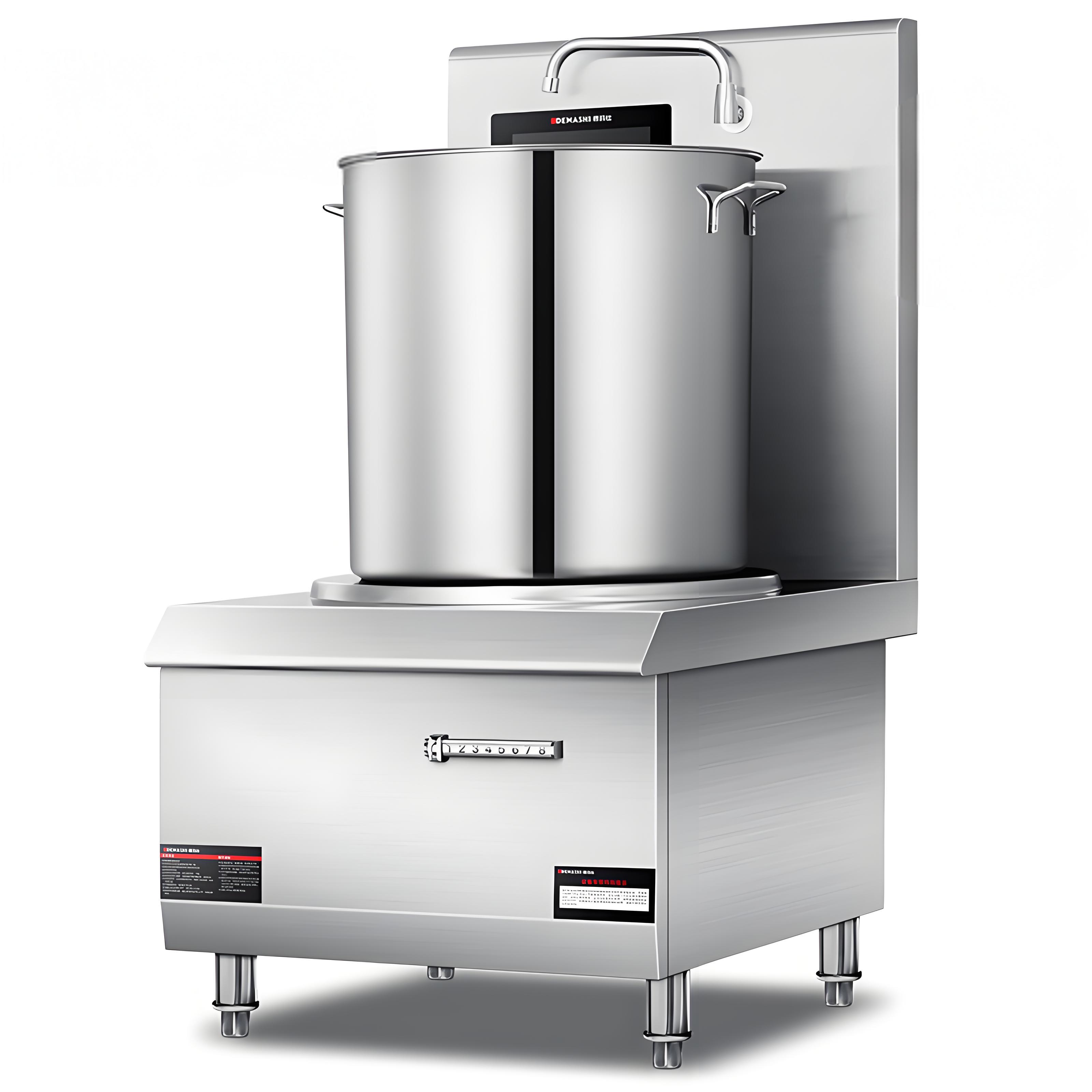
Why “More Power” Doesn’t Always Mean “Better Results”
First, let’s clarify what “high-power” means. Most residential induction cookers top out at 3,000W, while commercial models range from 4,000W to 12,000W. These units are designed for rapid, consistent heating, but their power output requires careful handling.
A common misconception: “If it’s 5,000W, I can cook anything faster.” The truth? Without proper technique, high power can lead to:
Wasted energy: Poorly aligned pans or mismatched cookware waste 20–30% of the cooker’s capacity.
Overheating: Unattended high-power settings can damage the cooker’s internal components or burn food.
Safety risks: Large cookers generate significant electromagnetic fields—improper use can interfere with nearby electronics (e.g., microwaves, POS systems).
Step 1: Choose the Right Cookware—Your Foundation
I’ve lost count of how many users blame their cooker for “poor heating” only to discover they’re using the wrong pan. The right cookware is 50% of the battle. Here’s what to look for:
Key Features of Induction-Compatible Cookware
| Feature | Why It Matters | Example Materials |
|---|---|---|
| Ferromagnetic Base | Induction relies on magnetic fields—only ferromagnetic metals (iron, nickel) generate heat. | Cast iron, enameled cast iron |
| Flat, Smooth Bottom | Uneven surfaces create air gaps, reducing heat transfer by 30–40%. | Stainless steel (induction-grade) |
| Minimum Thickness | Thin pans (≤2mm) overheat quickly; thick pans (≥5mm) distribute heat evenly. | 6mm cast iron, 3mm stainless steel |
Common Mistakes to Avoid
Aluminum/copper pans: These are non-magnetic—they won’t heat at all.
Warped or scratched bases: Even small dents break contact with the induction coil, wasting energy.
Oversized pans: A 30cm pan on a 25cm induction zone only uses 60% of the coil’s power. Use the cooker’s “zone markers” to size your pan correctly.
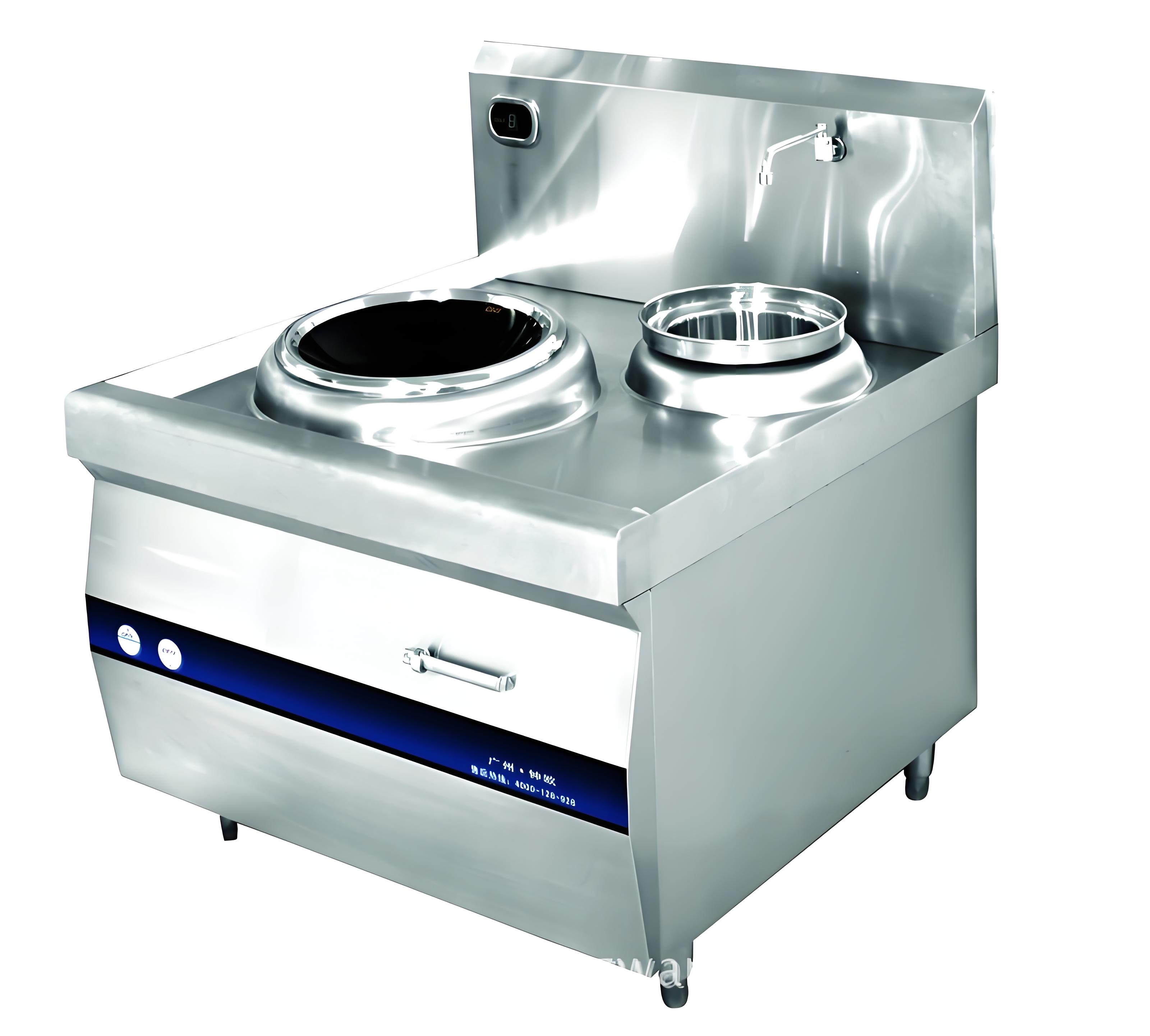
Step 2: Set Up Your Cooker for Success
Most high-power induction cookers come with advanced settings (power levels, timer, safety modes), but many users ignore them. Let’s demystify the controls:
Pre-Use Checklist
Clean the surface: Food spills or grease can insulate the glass, reducing heat transfer to the pan. Wipe with a damp cloth (avoid abrasive cleaners—they scratch the glass).
Check the power source: Ensure your outlet/voltage matches the cooker’s requirements (e.g., 5,000W needs a 220V circuit; using 110V will damage it).
Select the right mode: Commercial cookers often have “Boost” (max power for boiling), “Simmer” (low power for sauces), and “Auto” (adjusts power based on pan size). Use “Auto” for beginners—it optimizes energy use automatically.
Step 3: Master the Art of Heating
Here’s where most users go wrong: they treat induction like a gas stove, cranking the power to max and leaving it there. High-power induction works best with precision. Let’s break it down by cooking task:
Boiling Water or Stocks
Goal: Rapid heating without overheating the pan.
Method: Use “Boost” mode (80–100% power) for the first 5 minutes to bring water to a boil, then switch to “Simmer” (30–50% power) to maintain temperature.
Pro Tip: Place the pan centrally on the induction zone—off-center placement reduces efficiency by 15–20%.
Searing Meat or Frying
Goal: Create a crispy crust without burning the food.
Method: Preheat the pan on “Simmer” (30% power) for 2–3 minutes, then increase to “Medium” (60% power) once the pan is hot. Add oil and cook—this prevents the pan from overheating before adding food.
Pro Tip: Use a cast iron skillet for searing—it retains heat better than stainless steel, reducing the need for high power.
Simmering Sauces or Stews
Goal: Gentle, even heating to avoid scorching.
Method: Use “Low” (10–20% power) and stir frequently. If the sauce is thick, reduce the pan size (a smaller pan heats more evenly than a larger one).
Pro Tip: Avoid covering the pan tightly—steam buildup can cause pressure and splatter, damaging the cooker’s glass.

Step 4: Safety First—Avoid These Common Hazards
High-power induction cookers are safe when used correctly, but complacency leads to accidents. Here’s what to watch for:
Electrical Safety
Never use extension cords: High-power units draw large currents—extension cords can overheat and start fires. Plug directly into a dedicated outlet.
Keep it dry: Water on the control panel can short-circuit the system. Wipe spills immediately with a dry cloth.
Overheating Risks
Don’t leave it unattended: Even on “Simmer,” high-power units can overheat if the pan is empty or the lid is on too tight. Set a timer if you’re stepping away.
Check the cooker’s fans: Most models have built-in cooling fans. If the fan stops working (e.g., due to dust blockage), the cooker will overheat and shut down. Clean the fan vents monthly with a soft brush.
Step 5: Maintain Your Cooker for Longevity
A well-maintained induction cooker can last 10+ years; a neglected one might fail in 2. Here’s how to keep it running smoothly:
Cleaning Routine
Daily: Wipe the glass surface with a microfiber cloth and mild detergent (avoid ammonia-based cleaners—they streak). Never use steel wool or scouring pads—they scratch the glass.
Monthly: Remove the induction coils (if accessible) and vacuum any debris. Dust on the coils reduces efficiency by 10–15%.
Component Checks
Annual: Hire a professional to inspect the power cord, control board, and cooling system. Loose connections or worn-out fans are common causes of breakdowns.
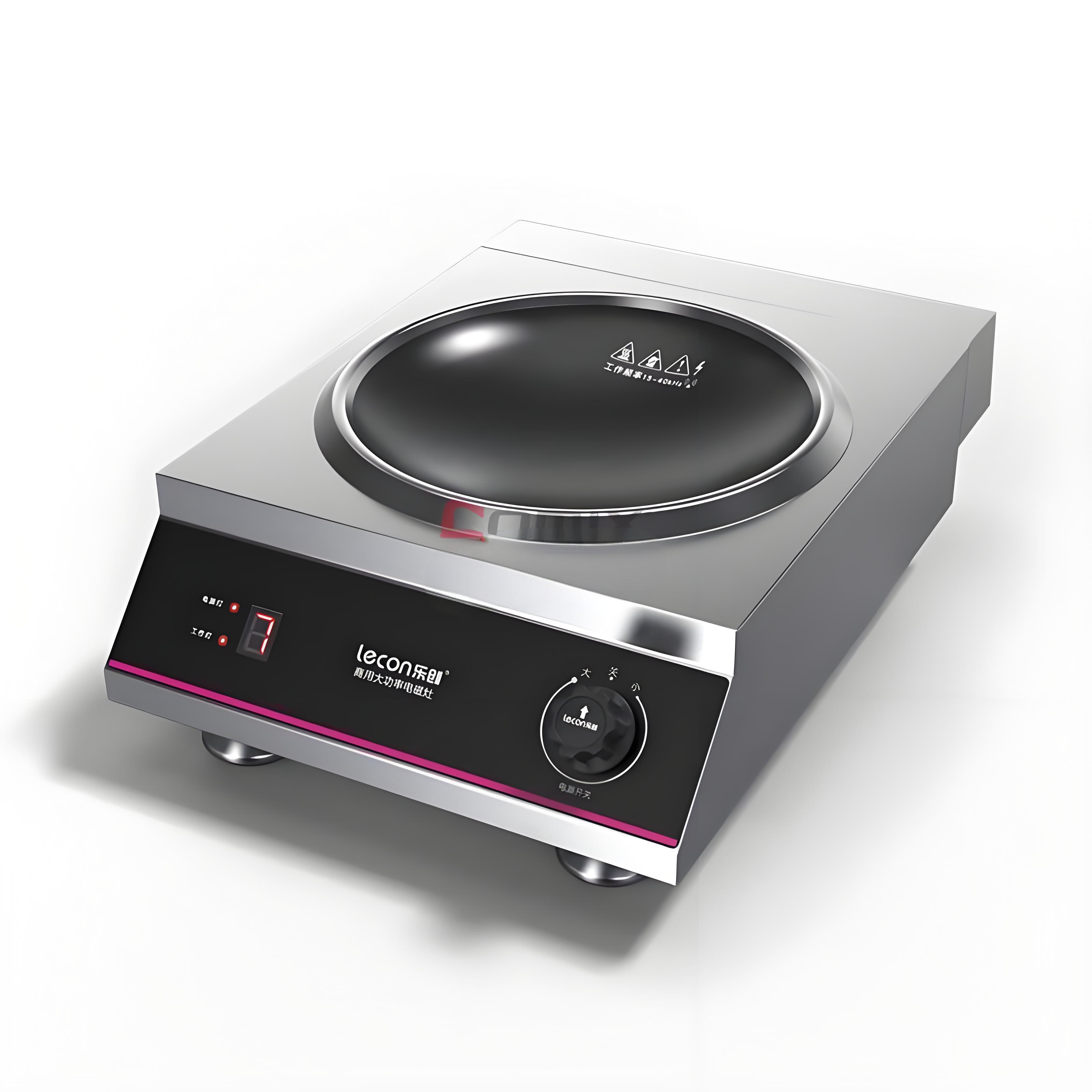
Real-World Example: From Frustration to Efficiency
Let’s revisit my friend’s food truck. After fixing his initial mistakes, here’s what changed:
Cookware: Switched to 6mm cast iron pans (matched the induction zone size).
Settings: Used “Boost” for boiling water (3 minutes instead of 8) and “Simmer” for sauces (no more scorching).
Maintenance: Cleaned the glass daily and checked the fan vents weekly.
Result? His cooking time dropped by 40%, his monthly energy bill went down 25%, and he hasn’t had a single breakdown in 6 months.
Related FAQs
Q: Can I use a wok on a high-power induction cooker?
A: Traditional round-bottom woks won’t work—their curved base creates air gaps. Look for “flat-bottom” induction woks (made of ferromagnetic steel) for best results.
Q: Why does my cooker shut off unexpectedly?
A: Common reasons: pan too small for the zone, empty pan (overheating protection), or debris blocking the fan. Check the pan size and ensure the fan is clean.
Q: Is it safe to use induction cookers near medical devices (e.g., pacemakers)?
A: High-power induction cookers generate strong electromagnetic fields. Consult your doctor and keep the cooker at least 1 meter away from medical devices.
Q: Can I repair a cracked induction glass surface?
A: No—cracks compromise the cooktop’s structural integrity and safety. Replace the glass immediately with a manufacturer-approved part.
As I left my friend’s food truck that day, he smiled and said, “Who knew a ‘smart’ cooker needed so much care?” The truth is, high-power induction cookers aren’t just appliances—they’re tools that reward attention to detail. By choosing the right cookware, adjusting your settings, and staying proactive about maintenance, you’ll unlock their full potential: faster cooking, lower energy bills, and years of reliable service.
So the next time you fire up your high-power induction cooker, remember: it’s not just about turning it on. It’s about working with it.
